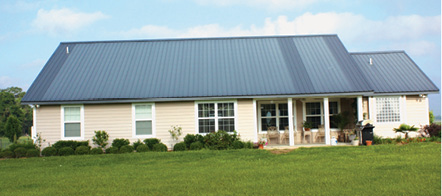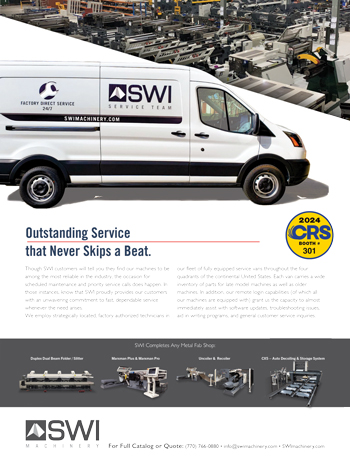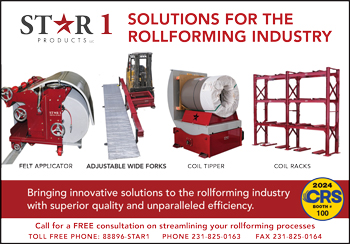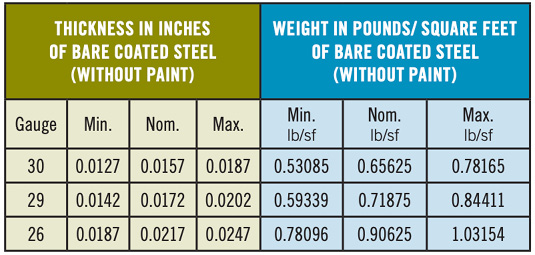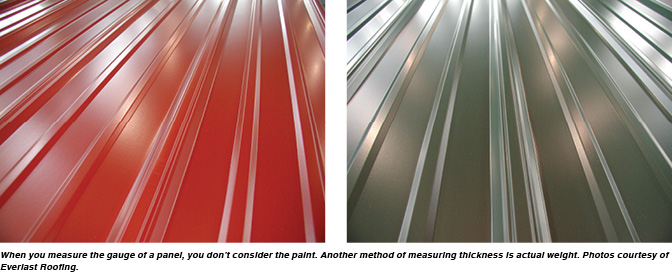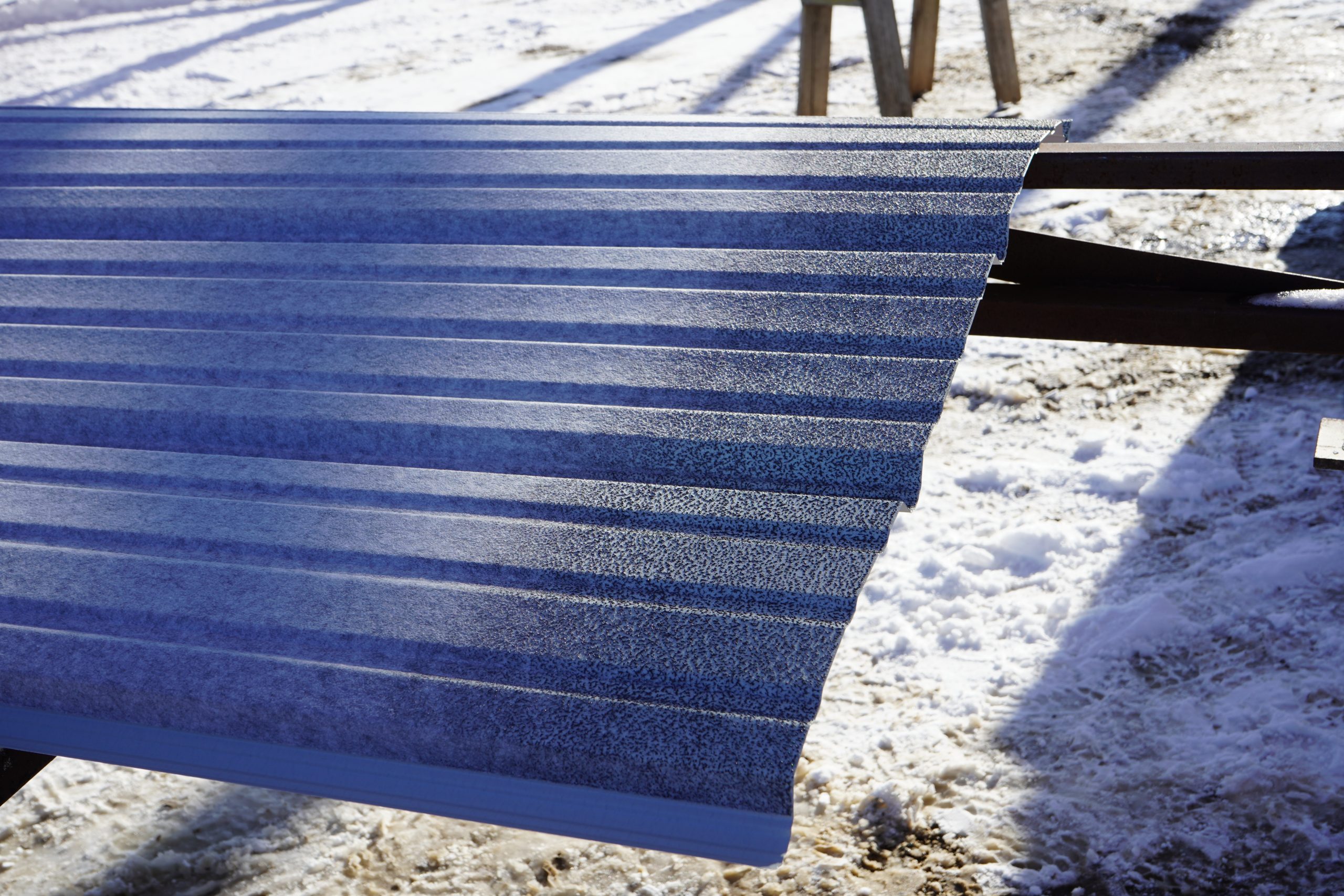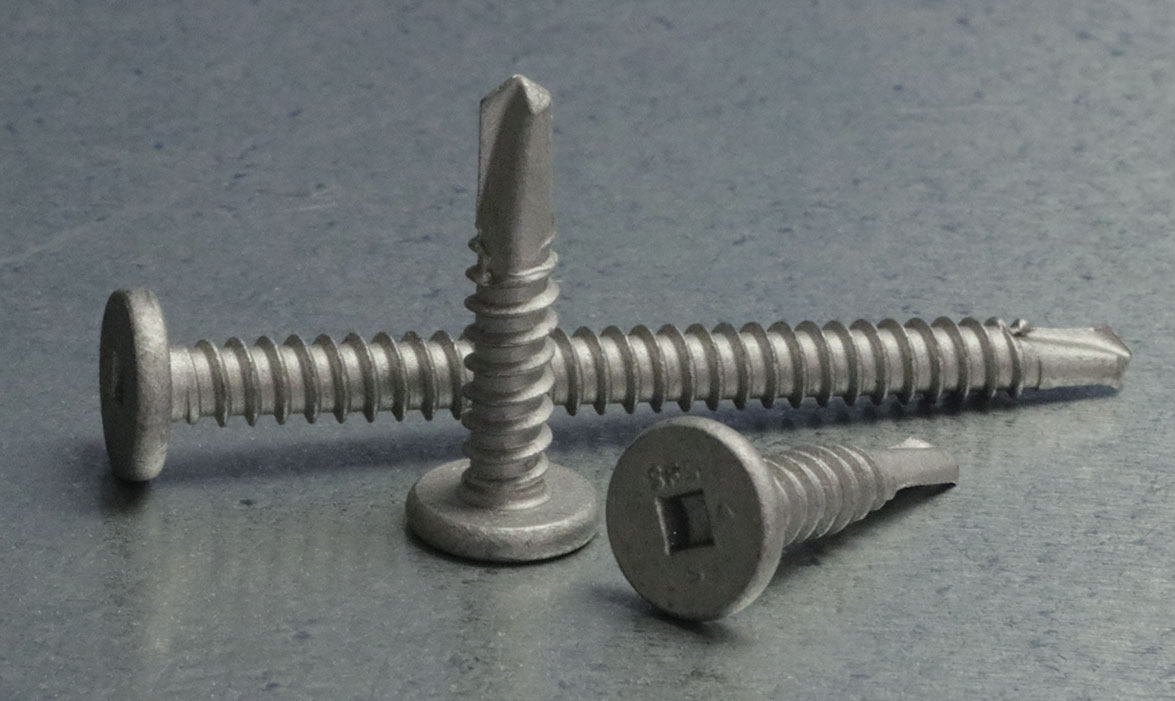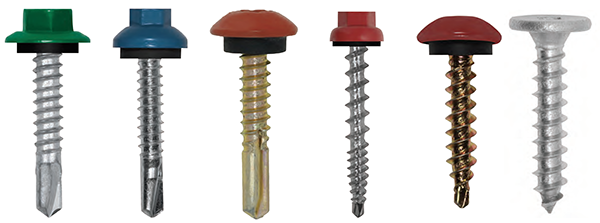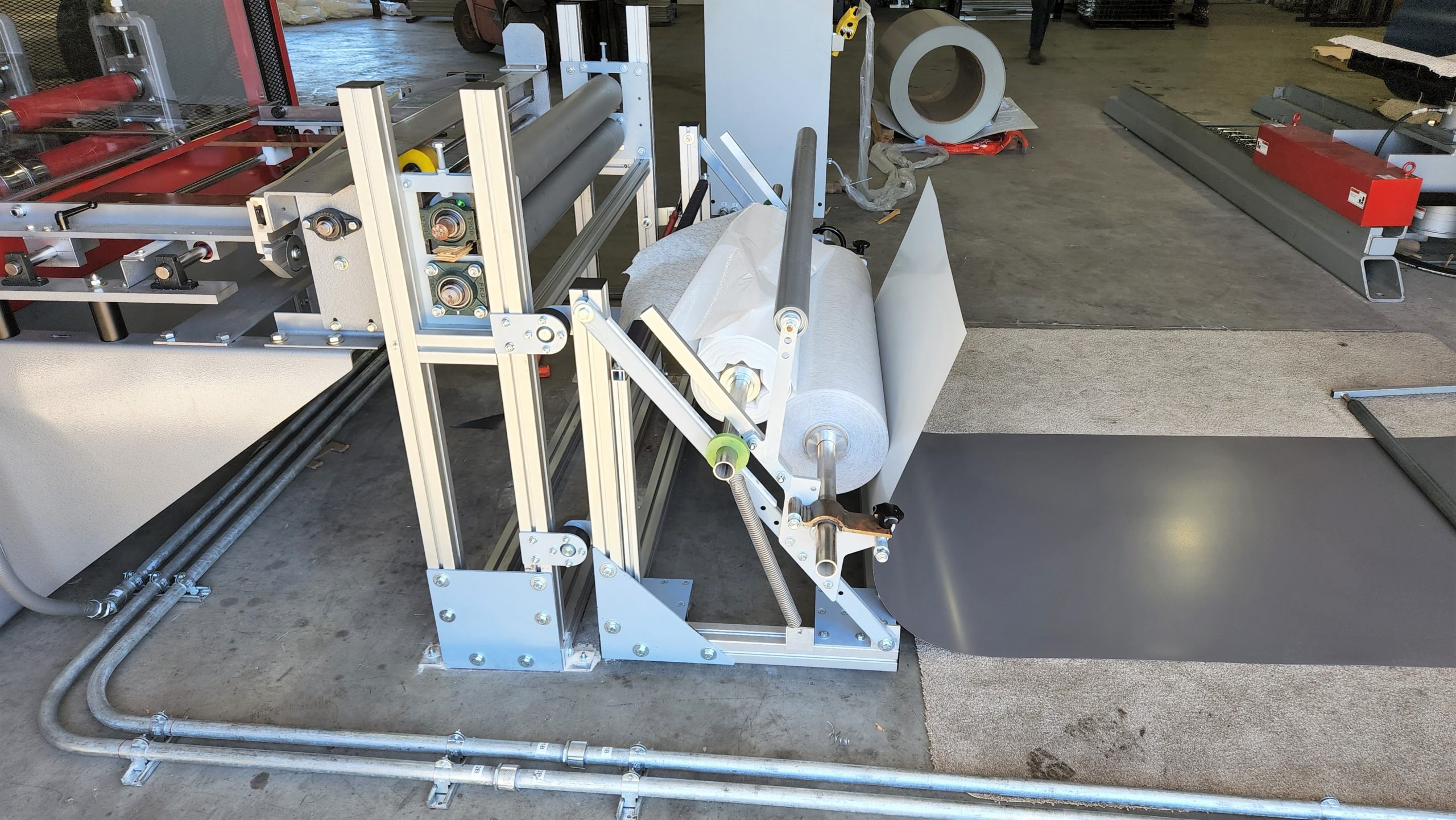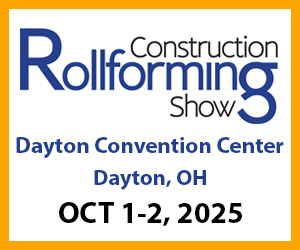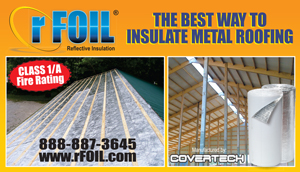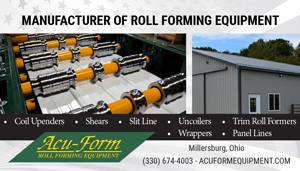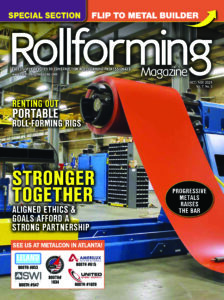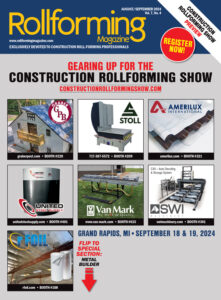Maximizing the metal
You may be the best builder on the planet, but if you use inferior products your stellar reputation could only last as long as those products.
Because the larger percentage of a post-frame and steel-frame building is metal, doesn’t it behoove you to know a lot about it?
At Steel Dynamics, Don Switzer, sales manager of SDI Columbus, and Dan Knight, now vice president and general manager of Duracoat, believe so. Their presentation “Not all Metal is Created Equal” was well received back in 2014 at the Frame Building Expo, so we caught up with them again to offer an overview of the topic.
Steel Dynamics is a major bare and painted steel coil provider in the construction industry. Like builders, getting the right product to the customer to use for the right purpose is crucial to maintaining its reputation.
So what is it they want all builders to know?
Gauge Or Thickness Of The Metal Is Critical
“At the start of the process is the steel, and it’s making sure that the strength is correct, and making sure that the gauge is correct,” Switzer said.
There are four general grades of steel but in the rural builder industry, the most common is Grade 50 used for trim and Grade 80 for building panels.
“All the product from a steel mill is certified (also called a Cert or Test Report) from a strength level,” said Switzer, “meaning that when you order a panel, it has an 80,000 yield strength or it has a 50,000 yield strength. Wherever you order it from, it’s important to ask your steel supplier for a test report.”
In addition to the strength of the materials, the test report will also reveal how much coating is on the steel, the gauge and the width.
Gauge is where many problems arise. There is a legitimate decimal range of thickness that panels can be made within a given gauge. A Gauge 29 panel, for instance, might range from .0142 all the way to .020 in thickness, but most people are selling in the .0145 to .0153 range. The lower the gauge, the heavier (stronger) the panel.
“Some [suppliers] are always trying to be on the skinniest side of that gauge so they can still call it 29 gauge,” Switzer said.
There are legitimate uses for both ends of the range, yet builders and their customers should not be fooled into thinking that one-gauge-fits-all.
Switzer is a strong believer that builders should stop thinking in terms of gauge and start thinking in terms of actual decimal thickness.
But even then, it’s important to know that the measurement of thickness never includes the paint.
“When you measure thickness or gauge of a panel, you have to take away the paint,” Switzer said. “The paint doesn’t provide any structural value.”
An even better method than measuring thickness is actual weight since weight leaves little room for exaggeration.
The Importance Of Paint
While paint doesn’t provide any structural value, it certainly does add value to the end product. Unpainted panels still have a big audience, but painted coil is now more popular than ever and it’s what most customers see most clearly.
Dan Knight came up through the coil coating and paint industry and he explains the different types of paint.
There are three types of paint systems for metal that are commonly used here in the United States:
Polyesters: the least expensive, usually with a 10-year warranty on an exposed application.
“Polyesters are a very good workhorse but typically they don’t have the exterior durability that’s required on the warranted products,” Knight said. “So where you see them is on the low- or non-warranted systems such as interior liner panels, gutters, non-warranted or very low-warranted wall and roofing panels. There is always going to be a market need, some people call it shade-and-shelter. It’s located in the back 40 and it’s not expected to last 40 years.”
SMP (silicone polyesters): The most widely used, averaging a 40-year warranty on the film, but fade and chalk can occur over time.
“It’s basically a more durable exterior grade system. This is the workhorse in the rural builder’s market,” Knight explained. “This is commonly referred to as a 40-year paint system.”
PVDF (Polyvinylidene fluoride—trade names include Kynar and Hylar): the premium paint system, averaging a 25-year warranty, but with the best protection against fade and chalk.
“You see [PVDF] a lot in commercial buildings,” said Knight.
The thickness of the paint is important. The thicker the paint, the better the panel can weather the elements and protect the substrate.
For warranted material, the primer should be a minimum of .2 mils thick and the paint or topcoat at least .8 mils for a total of 1 mil thickness. Like steel, there is a range: for top primer the range is 0.2-0.3 mils; the top paint or coat is 0.7-0.8; and the bottom or backer with primer is 0.5-0.7 mils.
Paint Warranty
“This is where understanding the supply chain of the paint system is important,” Knight said. “What you have to understand is that the paint warranty only covers three facets:
Chalk: This is a degradation of the resin and the pigments over time. When you rub your hand on the coating, it leaves a white residue.
Fade: the depth of color difference, say when a dark brown paint turns to a light brown.
Film integrity: the ability of the paint to stick to the metal.
“What is interesting, everybody says 40-year warranted paint but [with SMPs] the film integrity is 40 years, the chalk and the fade are 30 years,” Knight said.
In the United States, the paint warranty comes from the paint company (an Akzo Nobel, a Sherwin-Williams, a Duracoat) and is held by the company that applies the paint. No paint warranties are transferable. The paint warranty remains with the fabricator.
When there is a problem, it goes up through the chain to evaluate the cause of the failure and who will take responsibility, including the installer.
All roll formers should have available their agreements with the paint company, with the important facets of that language written into their own agreements as a protection for themselves and their customers.
Confused yet? To builders Knight noted: “I think it’s important to deal with a reputable roll former who has the depth to stand behind their product.”
Handle With Care
Once off the production line and on the job site, it’s up to the builder to make sure the panel is handled correctly. Don Switzer offers these job site tips.
Job site storage: “I know you think, well it’s building panels, we can store it outside,” he said, “but building panels are built to be on a building, not to be in a stack … In particular you don’t want water to get between the sheets so it causes the paint to delaminate. The pressure of the stack, and the water, forces the water through the paint and makes it delaminate. Once they are on the building, and the water is hitting them, the water is just running off. But when you have the water trapped, that’s where you have a problem.”
Installation: “The key is that you don’t damage the surface,” he said. “The metallic coatings without paint (Galvalume or galvanized) or the metallic coatings with paint are not as hard as the steel substrates beneath those paints. So you want to make sure you don’t compromise the integrity of the painted or metallic surface. Again, once they’re up and they’re not scratched, you don’t have a problem. But if you scratch that product all the way down to the base metal, it’s going to rust because you’ve damaged the barrier placed there to protect it.”
More On Warranties
The longevity of metal panels is a selling point but also can create an issue when warranties are involved. “You have these warranties for a long time, so do your due diligence,” said Dan Knight.
Knight recommends that builders have their suppliers walk them through the claims process. “If someone says ‘I have a 40-year warranty,’ understand what that means, and understand the remedy.”
What is covered for 40 years and what isn’t?
“Maybe the best thing to do is to say [to your supplier]: walk through the claims process with me. If I have this product for 10 years and I have a claim in 10 years, what happens? Whoever they’re buying it from should be able to tell them how it works.”
Also make sure you keep your receipts. Your bill of receipt will contain important coil numbers, batch numbers and paint code numbers. Assuming you are working with a legitimate company, all that information will help track down vital information about the coil’s production process and warranty details. Paint codes will tell you the type of paint and the years it is expected to last.
A note of warning: while there is a lot of good foreign steel, there is also a fair share of cheap and poorly-made foreign steel. Getting satisfaction on a warranty from thousands of miles away, and across multinational lines, can get tricky.
Then there are the instances where a company is not legitimate. The guys at Steel Dynamics have seen it all. “What we find with off-shore steel in particular, they might mimic our warranty. It may be all misspelled, but they’ll copy it, except for the remedy. That’s important. The warranty may say ‘this warranty is only for the cost of the paint.’ So you just paid $12,000 for metal and the paint cost is $800. Or it may say ‘this warranty is not valid within a thousand meters of water, man made or otherwise; or not in areas of high humidity; or all claims are settled in Chinese court.’ So you have to really understand these things. And compare that to other warranties.”
Switzer has even seen bogus companies passing out Bethlehem Steel warranties and Bethlehem Steel hasn’t been in business since 2002.
The victim is ultimately the building owner, but of course everyone along the supply chain are victims as well, from the roll former who purchased that problem steel, to the builder who bought the finished panel and installed it.
Understand the claims process and your level of risk exposure.
“It’s one thing to sell a building to someone with a 40-year warranty, but it’s another thing to have that person come back and discover there’s nothing behind that warranty. And you live in the same town and go to the same church. It’s going to be hard to tell him, ‘well, I can’t really fix this.’”
Unfortunately, the consequences may come when you least expect it. “Even a marginal product will last 10 years pretty much anywhere in the country. So what’s going to happen in 10 years, faster in the south, there’s going to be a day of reckoning, where the offshore stuff people buy, the red is going to turn pink, the green is going to turn white or yellow.”
Bottom line: “Just understand there is a lot of exposure to this. To replace or repaint a roof is considerably more expensive than the cost of the metal.” RF


